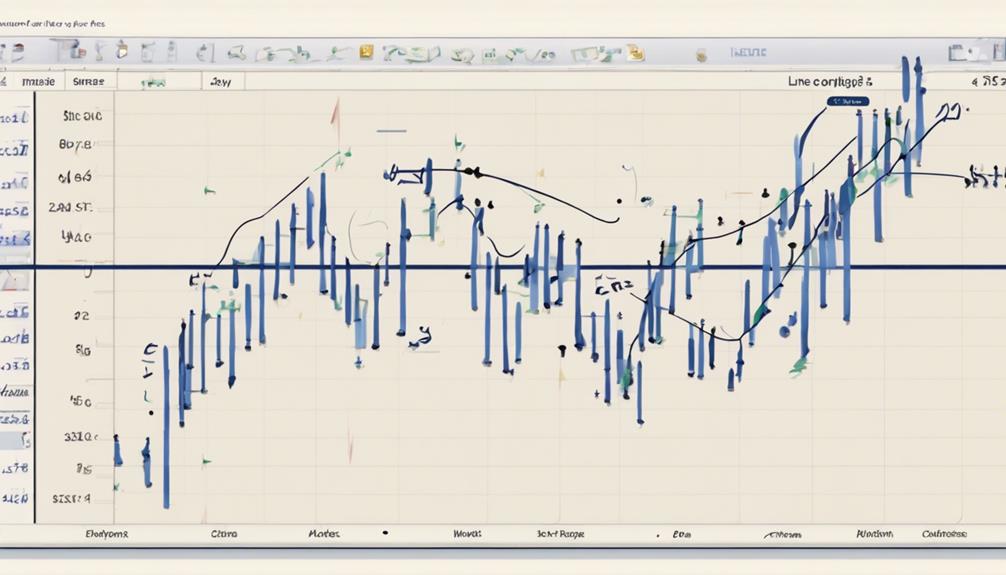Exploring the three best approaches to understanding Elliott Wave Theory can provide traders with valuable insights into market dynamics and price movements. By dissecting wave patterns, comprehending the mechanics of waves, and applying these principles to market analysis, investors can unlock a deeper understanding of market trends and potential opportunities.
These approaches offer a structured framework for analyzing price behavior and market psychology, shedding light on the intricacies of Elliott Wave Theory and its practical implications for traders. Understanding these fundamental concepts opens doors to enhanced market forecasting and strategic decision-making.
Simplifying Elliott Wave Theory
In simplifying Elliott Wave Theory, the focus lies on breaking down complex wave structures into recognizable 5-3 wave patterns for enhanced comprehension. Elliott Wave Theory, developed by Ralph Nelson Elliott in the 1930s, suggests that market price movements follow repetitive patterns composed of impulsive waves (5 waves) and corrective waves (3 waves). By understanding these patterns, traders and analysts can potentially anticipate future market movements. The 5-3 wave pattern is a fundamental aspect of Elliott Wave Theory, highlighting the alternating nature of market trends.
The repetitive nature of 5-wave impulses followed by 3-wave corrections forms the basis of Elliott Wave Theory. This structured approach allows practitioners to identify potential entry and exit points in the market. By using clear language and visuals, complex wave structures can be simplified, aiding in the interpretation of market trends. Understanding these patterns is essential for successful application of Elliott Wave Theory in financial markets, where precise analysis and interpretation are paramount.
Practical Examples and Applications

Exploring tangible instances of applying Elliott Wave Theory in financial markets reveals its potential to enhance strategic decision-making for traders and analysts. By analyzing wave patterns, traders can pinpoint potential entry and exit points, optimizing their trade executions. Historical price charts serve as valuable resources for practical examples of Elliott Wave Theory in action, allowing for retrospective analysis of market movements. Understanding wave degrees is crucial as it aids in assessing the strength and longevity of trends, guiding traders in making informed decisions.
In real-time trading scenarios, the application of Elliott Wave Theory can provide traders with a structured framework for interpreting market dynamics and executing trades effectively. By incorporating this analytical tool into their strategies, traders can improve risk management practices and enhance overall performance in financial markets. These practical examples underscore the relevance and applicability of Elliott Wave Theory in modern trading environments, demonstrating its value in navigating complex market conditions.
Building Confidence in Wave Pattern Analysis

Analyzing Elliott Wave patterns with precision and confidence requires a deep understanding of key principles such as impulse waves, corrective waves, Fibonacci ratios, and wave degrees. Confidence in wave pattern analysis grows with practice and experience in identifying Elliott Wave patterns.
Understanding the principles of impulse waves and corrective waves enhances confidence in interpreting patterns accurately. Utilizing Fibonacci ratios and wave degrees effectively can boost confidence in identifying wave patterns in market trends.
Consistent application of Elliott Wave Theory principles leads to increased confidence in interpreting patterns. Building a solid foundation of knowledge on Elliott Wave Theory is crucial for developing confidence in analyzing and predicting wave patterns.
Which Insights Into Elliott Wave Theory Are Essential for Understanding the Concept?
Understanding the best insights into Elliott Wave Theory is essential for grasping the concept. Recognizing wave patterns, understanding market psychology, and utilizing Fibonacci retracement levels are vital components. Additionally, embracing the principle of wave interpretation and adhering to the rules of wave formation are key for comprehension.
Frequently Asked Questions
How Do You Study Elliott Wave Theory?
To study Elliott Wave Theory, one can start by delving into foundational texts such as 'Elliott Wave Principle' by Prechter Jr. and Frost. Practical guides like 'Five Waves to Financial Freedom' by Ramki N. Ramakrishnan offer simplified approaches, while advanced analysis techniques can be found in 'Mastering Elliott Wave' by Glenn Neely. Real-world application can be explored through resources like 'Elliott Wave Trading' by Jeffrey Kennedy and Wayne Gorman. For market-specific insights, 'The Elliott Wave Principle Applied to Forex' by Robert Balan provides valuable perspectives on the Forex market.
How Do You Master Elliott Wave?
Mastering Elliott Wave Theory involves diligent study, practice in wave pattern recognition, understanding wave degrees, utilizing Fibonacci ratios, and real-time application in trading. It requires commitment to refining analysis skills and adapting to market dynamics.
How Reliable Is Elliot Wave Theory?
The reliability of Elliott Wave Theory varies based on analyst skill and experience. Historical data and pattern recognition play crucial roles. Subjective wave interpretation can impact analysis. It remains a debated topic among traders.
What Is the Best Indicator to Use With Elliott Wave?
The best indicator to use with Elliott Wave Theory is the Fibonacci retracement tool. It helps identify potential reversal levels and complements wave analysis. Despite its complexity, mastering this tool enhances the accuracy of wave counts.
Conclusion
In conclusion, mastering the key concepts of wave patterns, understanding how waves function, and applying Elliott Wave Theory in market analysis offer traders a structured approach to predicting future price movements.
By building confidence in wave pattern analysis, investors can effectively identify entry and exit points, anticipate market psychology, and make informed trading decisions.
Embracing these approaches can lead to enhanced market insights and improved trading outcomes, ultimately driving success in the financial markets.
